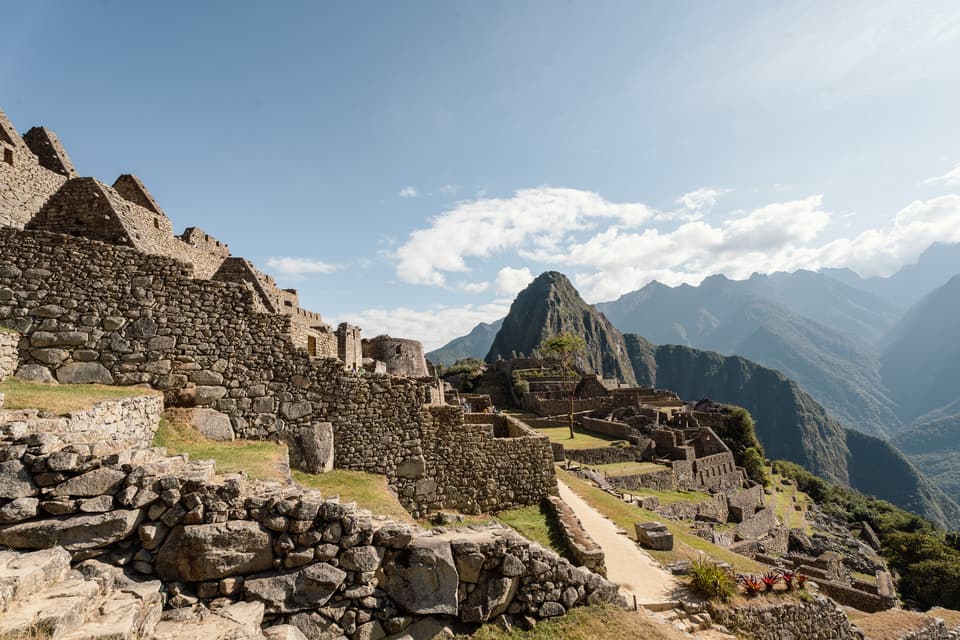The weather on the Inca Trail to Machu Picchu varies with altitude and season. During the dry season (May to September), expect clear, sunny days with temperatures between 15°C to 20°C (59°F to 68°F) and cold nights, sometimes below freezing. This season offers the best views and hiking conditions.
The wet season (November to March) brings heavy rain, making the trail slippery and challenging. Daytime temperatures range from 18°C to 25°C (64°F to 77°F). The landscape is lush and green, but rain and mud are common. April and October have mixed weather, with sunny and rainy days, so be prepared for anything.
This travel guide will help you prepare for the Inca Trail's weather, ensuring a great adventure, whether you're an experienced hiker or a beginner.
Classic Inca Trail 4 days Day-by-Day Weather
The Classic Inca Trail is a four-day trek leading to Machu Picchu. It offers a unique weather experience influenced by altitude and seasonal changes. Knowing what to expect with the weather is key to having a safe and enjoyable hike.
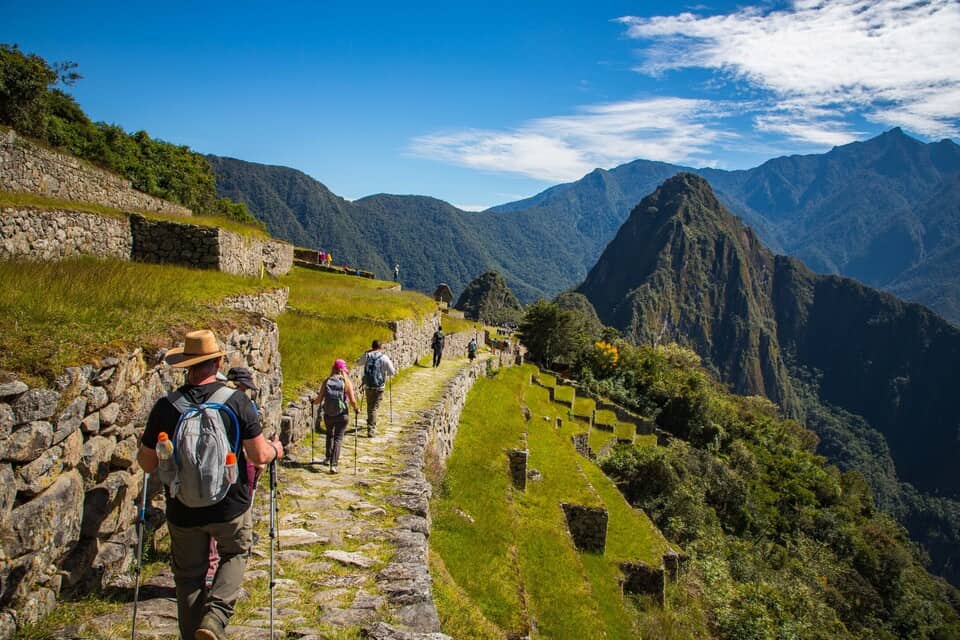
Day 1 on the Classic Inca Trail
- Altitude: Starts at 2,800 meters (9,186 feet)
- Weather: The weather on the first day is usually mild and variable. Daytime temperatures range from 15°C to 20°C (59°F to 68°F), while nights are cooler.
- Experience: The trail starts gently with a mix of uphill and downhill sections. You'll walk through lush valleys and small villages.
- Preparation: Dress in layers, as mornings can be cool, but it warms up by midday. A light jacket and comfortable hiking clothes are ideal.
Day 2 on the Classic Inca Trek
- Altitude: Ascending to Dead Woman's Pass at 4,200 meters (13,779 feet)
- Weather: As you climb higher, temperatures drop. During the day, it can be around 10°C to 15°C (50°F to 59°F), but nights can drop below freezing.
- Experience: This is the most challenging day, with a steep ascent to the highest point of the trail. The views are breathtaking, but the climb is demanding.
- Preparation: Bring warm clothing for the night and be prepared for possible rain. A good fleece jacket and a hat are essential. Hydration is crucial, so carry enough water.
Day 3 on the Trek to Machu Picchu
- Altitude: Ranges from 3,600 meters (11,811 feet) to 2,650 meters (8,694 feet)
- Weather: The weather varies as you descend. Daytime temperatures range from 12°C to 20°C (54°F to 68°F), with cooler temperatures at higher altitudes.
- Experience: This day involves both ascents and descents. You'll pass through stunning cloud forests and ancient Inca ruins, making it a visually rewarding part of the trek.
- Preparation: Expect variable weather; pack rain gear and dress in layers. A light, waterproof jacket and quick-drying clothes are recommended.
Day 4 at Machu Picchu
- Altitude: Descending to 2,400 meters (7,874 feet)
- Weather: The final day is usually milder and often warmer. Daytime temperatures can reach 20°C to 25°C (68°F to 77°F).
- Experience: The last leg of the journey leads you to the Sun Gate, where you'll get your first glimpse of Machu Picchu. It's an emotional and rewarding experience.
- Preparation: Wear light clothing for the day, but keep a rain jacket handy. Comfortable shoes are important for the final stretch.
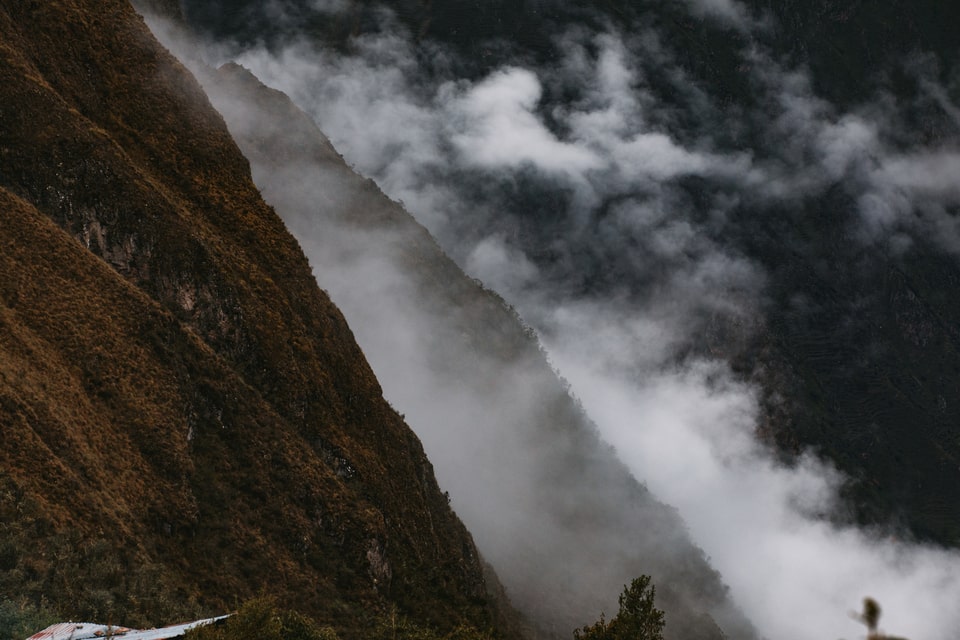
Seasonal Weather Variations
The weather on the Inca Trail to Machu Picchu adds an element of mystery and challenge to this legendary trek. High in the Andes, the trail's climate can change dramatically from one moment to the next. Hikers can experience everything from bright, sunny skies to misty rain and chilly mountain air. Understanding the seasonal weather patterns is essential for a safe and enjoyable journey. Each season offers a unique view of the stunning landscapes and ancient ruins that await.
Dry Season (May to September)
- Typical Conditions: Clear skies, mild days, and cold nights.
- Advantages: Better visibility, lower humidity, and fewer insects.
- Challenges: Cold nights, especially at higher altitudes. You need to bring warm sleeping gear.
Wet Season (November to March)
- Typical Conditions: Frequent rain, warmer days and nights, and lush landscapes.
- Advantages: Beautiful green scenery and fewer crowds.
- Challenges: Muddy and slippery trails, increased chance of rain. Waterproof gear is essential.
Shoulder Seasons (April and October)
- Weather: A mix of dry and wet conditions as the seasons transition. The weather can be pretty variable, requiring readiness for both rain and sun.
- Temperatures: Daytime temperatures range from 15°C to 22°C (59°F to 72°F), and nighttime temperatures are between 5°C and 10°C (41°F to 50°F).
- Scenery: The landscapes remain lush and green from the wet season, with increasingly clear skies.
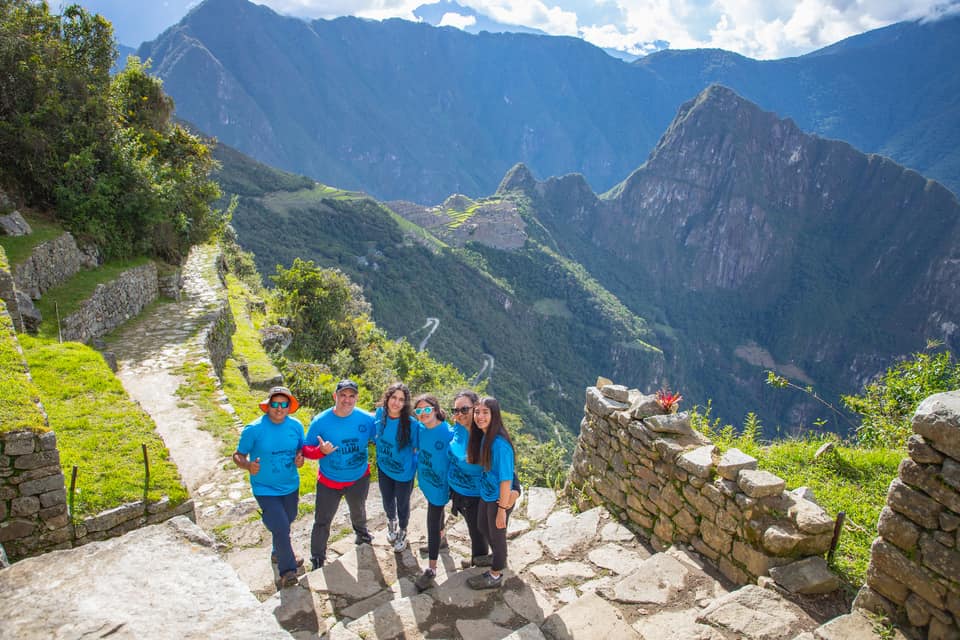
Month by Month Weather Variations
Exploring the Inca Trail to Machu Picchu is an adventure deeply influenced by the month-to-month weather variations. Each month brings its own unique climate conditions, shaping the experience of this iconic trek.
Understanding the weather patterns, from the vibrant greenery of the wet season to the straightforward, crisp skies of the dry months, is crucial in planning your journey. This guide will help you navigate the trail's seasonal changes, ensuring you make the most of every step towards the awe-inspiring Machu Picchu.
January
- Weather: This is the wet season with lots of rain, cloudy skies, and high humidity.
- Temperatures: During the day, it’s 18°C to 23°C (64°F to 73°F); at night, it’s 8°C to 13°C (46°F to 55°F).
- Tips: Waterproof gear is essential. The trail can be muddy and slippery.
February
- Weather: The wet season continues with frequent rain and fog.
- Temperatures: Daytime 18°C to 23°C (64°F to 73°F), nighttime 8°C to 13°C (46°F to 55°F).
- Tips: Similar to January, waterproof gear and good boots are needed. The trail is often closed for maintenance.
March
- Weather: It is the end of the wet season; it is still rainy but starting to clear up.
- Temperatures: Daytime 18°C to 23°C (64°F to 73°F), nighttime 8°C to 13°C (46°F to 55°F).
- Tips: Pack rain gear and be ready for a mix of rain and sunshine.
April
- Weather: A mix of dry and wet weather as the season changes.
- Temperatures: Daytime 17°C to 22°C (63°F to 72°F), nighttime 5°C to 10°C (41°F to 50°F).
- Tips: Bring versatile clothing for variable weather. Rain gear and layers are important.
May
- Weather: The start of the dry season with clear skies and mild weather.
- Temperatures: Daytime 15°C to 20°C (59°F to 68°F), nighttime 0°C to 5°C (32°F to 41°F).
- Tips: Great for trekking. Dress in layers for cold nights and mornings.
June
- Weather: Dry season; expect clear and sunny weather.
- Temperatures: Daytime 15°C to 20°C (59°F to 68°F), nighttime -2°C to 3°C (28°F to 37°F).
- Tips: Perfect for hiking. Bring warm clothing for the cold nights.
July
- Weather: Peak of the dry season with stable and pleasant weather.
- Temperatures: Daytime 15°C to 20°C (59°F to 68°F), nighttime -2°C to 3°C (28°F to 37°F).
- Tips: Busy with tourists. Prepare for cold nights and bring sun protection.
August
- Weather: The dry season continues with excellent conditions for trekking.
- Temperatures: Daytime 15°C to 20°C (59°F to 68°F), nighttime 0°C to 5°C (32°F to 41°F).
- Tips: Similar to July. Great for trekking with warm clothing for nights.
September
- Weather: The end of the dry season; mostly dry with occasional showers.
- Temperatures: Daytime 16°C to 21°C (61°F to 70°F), nighttime 3°C to 8°C (37°F to 46°F).
- Tips: Excellent trekking conditions. Pack layers for changing temperatures.
October
- Weather: A mix of dry and wet weather as the season changes again.
- Temperatures: Daytime 17°C to 22°C (63°F to 72°F), nighttime 5°C to 10°C (41°F to 50°F).
- Tips: Be prepared for unpredictable weather. Rain gear and layers are important.
November
- Weather: The start of the wet season with increasing rain and humidity.
- Temperatures: Daytime 18°C to 23°C (64°F to 73°F), nighttime 8°C to 13°C (46°F to 55°F).
- Tips: Waterproof clothing is essential. Be ready for muddy trails.
December
- Weather: Wet season with frequent rain and high humidity.
- Temperatures: Daytime 18°C to 23°C (64°F to 73°F), nighttime 8°C to 13°C (46°F to 55°F).
- Tips: Similar to January and February. Good rain gear and sturdy boots are necessary.
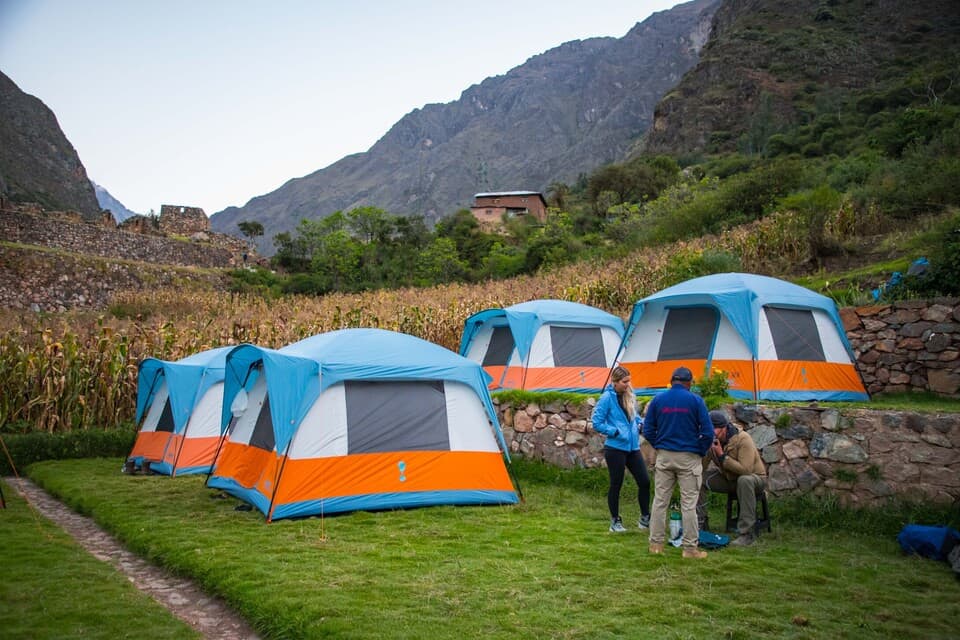
Top 10 FAQs About Inca Trail Weather
What is the best time of year to hike the Inca Trail?
The best time to hike the Inca Trail is during the dry season, which runs from May to September. During this period, the weather is more predictable, with clear skies and mild temperatures. This makes for comfortable trekking conditions and provides the best visibility for enjoying the stunning mountain views and ancient Inca ruins.
How cold does it get on the Inca Trail at night?
Nights on the Inca Trail can be quite cold, especially at higher altitudes. During the dry season, nighttime temperatures can drop to between 0°C and -5°C (32°F to 23°F). It's important to bring warm clothing, including a good quality sleeping bag rated for cold temperatures, thermal layers, and a warm hat.
Is it safe to hike the Inca Trail during the wet season?
Hiking the Inca Trail during the wet season, which lasts from November to March, is possible but challenging. Due to frequent rain, the trails can be muddy and slippery, and there is a higher chance of landslides. Waterproof gear is essential, and trekkers should be prepared for wet and potentially difficult conditions. However, the scenery is lush and green, and there are fewer tourists.
What should I wear for trekking the Inca Trail?
Dressing in layers is key to staying comfortable on the Inca Trail. Start with a moisture-wicking base layer to keep sweat away from your skin. Add an insulating layer, such as a fleece or down jacket, for warmth. Top it off with a waterproof and windproof jacket to protect against rain and wind. Sturdy, waterproof hiking boots are essential, along with a hat and sunscreen for sun protection.
How does the altitude affect the weather on the Inca Trail?
The weather on the Inca Trail varies greatly with altitude. Higher altitudes are generally cooler and can be more unpredictable. As you ascend, temperatures drop, and weather conditions can change quickly. It's important to be prepared for a range of temperatures and pack accordingly. Additionally, be aware of the risk of altitude sickness and take measures to acclimatize properly.
What are the temperatures like during the day on the Inca Trail?
Daytime temperatures on the Inca Trail vary by season. In the dry season, daytime temperatures typically range from 15°C to 20°C (59°F to 68°F). During the wet season, temperatures can be slightly warmer, ranging from 18°C to 25°C (64°F to 77°F). However, even during the day, it can feel cooler at higher elevations, so layers are recommended.
Does it rain a lot on the Inca Trail?
Rain is most common during the wet season from November to March. During this time, heavy showers are frequent, and the humidity is high. In the dry season, rain is less common, but it is still possible to experience occasional showers, so it's a good idea to carry a lightweight rain jacket just in case.
How should I prepare for changing weather conditions on the Inca Trail?
To prepare for the varying weather conditions on the Inca Trail, pack versatile, layered clothing. Bring waterproof gear, including a jacket and pants, as well as warm layers for cold nights. Sun protection is also important, so pack a hat, sunglasses, and sunscreen. Stay informed about the weather forecast and be ready to adjust your clothing and gear as needed.
Are there any months when the Inca Trail is closed?
Yes, the Inca Trail is usually closed for maintenance in February. This annual closure allows for essential repairs and conservation work to be carried out on the trail, ensuring it remains safe and enjoyable for trekkers. If you intend to hike the Inca Trail, it's important to plan your trip around this closure.
What kind of weather can I expect at Machu Picchu itself?
Machu Picchu, located at a lower altitude than much of the Inca Trail, tends to have milder weather. Daytime temperatures typically range from 18°C to 25°C (64°F to 77°F). The area can be humid, and rain is possible, especially during the wet season. It's a good idea to wear light, breathable clothing and keep a rain jacket handy. The weather at Machu Picchu is generally more stable, but it's always wise to be prepared for changes.
By understanding the seasonal weather variations on the Inca Trail, you can better prepare for your trek and ensure a memorable and enjoyable journey to Machu Picchu.
